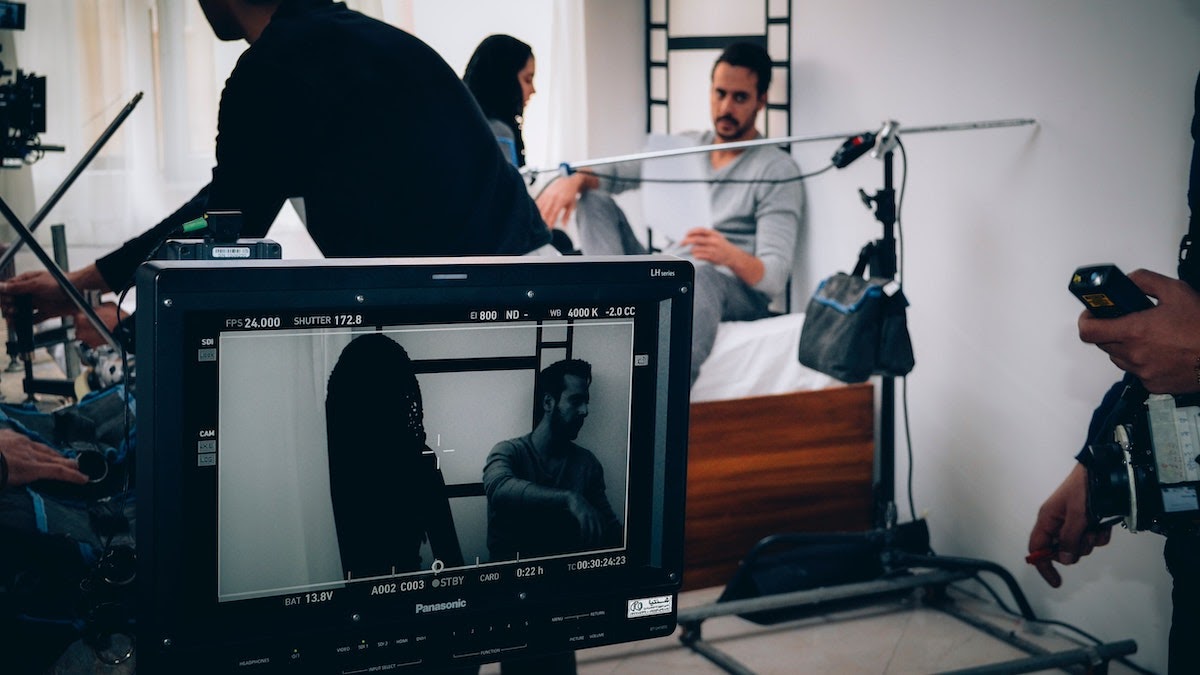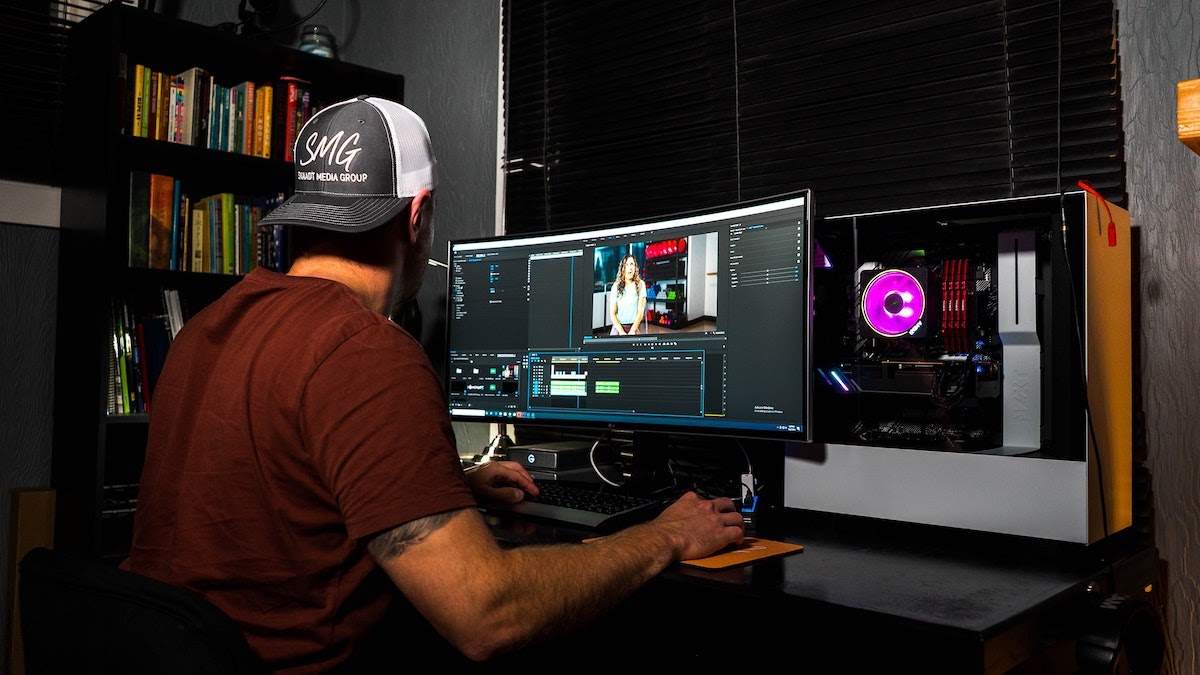It's time to talk post-production. Post-production is the long-standing and often under-appreciated final stage of any video project. Everything gets edited together, new elements are added in, and the final product is polished until it's as exciting/funny/dramatic/engaging as it possibly can be.
If you’re new to the post-production process, welcome! We’re here to walk you through how to create a streamlined post-production workflow so that you can save time and work smarter, not harder, as you assemble your final project.
What is the Post-Production Process?
The post-production process is what any video project goes through after it stops shooting and before the project is released to the public. It includes the raw video editing process, sound mixing, visual effects, color correction and grading, and final soundtrack development and placement.

Why is Post-Production Important?
It is often remarked that shooting a video project is simply gathering the ingredients to be later combined into the final recipe by the post-production team. This is a pretty accurate picture of where post-production fits in during the creation of a movie, tv-show, or other video projects. It's the place where all the different elements are mixed and melded together to create the final project.
There is no final product without post-production, making it as crucial to a project as pre-production or production (shooting).
The 8 Steps of a Streamlined Post Production Workflow
Step 1: Receipt of Raw Footage
This can come in the form of "dailies," which is a daily delivery of all footage shot during that day of filming (this is typical on longer projects such as TV shows or films), or at the end of a shoot (which is often the case for shorter projects such as music videos or commercials).
Post-production starts once footage starts arriving at the editors. This is the raw material that everything will be built around in post-production.
Step 2: Storage and Organization of Raw Footage
This is a crucial step that is too often overlooked and, if done improperly, can cost hundreds of wasted hours over the course of a project. Once the post-production team receives the footage, it must be properly notated, organized, and cataloged so that it can be easily found and retrieved later.
This is sometimes done on a personal drive with backups or on a shared network or cloud drive for teams working collaboratively. No matter what method you choose to use to store your footage, make sure you put a system in place to properly organize each shot so you can find it easily later.
Many video editors receive a shot log from the camera crew with each delivery of clips, which they use to organize the footage. It tells the editor what scene each shot is for, which camera setup it is from, and which take each shot was. It sometimes also includes helpful information from the director of photography and director about which shots they would prefer to be used in the edits.
Editors can use these notes to properly catalog the footage and keep track of exactly what shots are where so they can quickly build their rough draft of the edit.

Step 3: Build the Rough Cut
This is the job of the film editor and their team. Once all the footage has been received, logged, organized, and stored, it’s time to build the first version of the final product. This is their best approximation of what the story should look like and is often done alongside the director and director of photography providing notes.
Step 4: Receive Notes and Refine The Rough Cut Into a Final "Locked" Cut
Once a rough cut is finished, it goes to the director, director of photography, and producers for editing notes. The editor then uses these notes to create a more refined version of the edit. This process often requires several rounds of notes and re-edits until everyone finally agrees on a "picture locked" cut, meaning no more visual edits will be done to the footage so that it can be handed off to the rest of the post-production team to do their work.
Step 5: Visual Effects (VFX)
Once the project is picture locked, it gets handed off to the visual effects team to add in all the extra visual goodies that will appear in the final project. This can be everything from adding small elements like birds in the sky to huge centerpiece animations like dragons or virtual worlds.
This is also where the film gets its color correction and color "grades," which refers to using color to give the project a specific feel or mood. Once all the visual effects elements, motion graphics, and color grading are in place, now it's time to focus on not just what the project looks like but what it sounds like.
Step 6: Sound Effects/Mixing
With all the visual elements in place, it's time for the sound team to bring each visual element to life in our ears. The sound editor will primarily handle ensuring that the dialogue, foley, and other sound elements are all perfectly balanced in the final mix. The composer will build a musical score to accompany the project. The foley artists will build an array of sounds that weren't recorded during video production, such as footsteps, the rustle of clothing, the rush of the wind, and so on.
This is where the project really starts to come “alive,” with visual and audio elements working in tandem to make the audience truly “feel” the project.
Step 7: Final Approvals and Fine-Tuning
Once a project has gone through all the previous steps, it's time to sit the final decision-makers down with it and get final notes. This is where any fine-tuning that needs to be done before a project is released and distributed are noted.
Rarely does this process include huge edits like cutting out entire shots, but very often includes small refinements to different elements such as sound and effects.

Step 8: Distribution
This is where post-production ends and marketing and distribution begin. Once all the approvals have been locked in and the final cut is ready, the post-production team creates final exports of the file in media formats for different distributors (digital theatrical release, film theatrical release, online streaming, etc.), has captions created, and creates an archive of the assets in the event of a catastrophic loss.
How Long Does Post-Production Typically Last?
Depending on the project, post-production can be as little as a few days or as long as several years. The length of the final product and the amount of visual and other effects needed significantly affect how long the post-production process takes.
For big blockbuster films packed with visual effects, studios often hire hundreds of post-production personnel to work in tandem with the shooting schedule so that they can reduce the time it takes to create the final project, but it can still be over a year after the shoot wraps before even these films get to distribution.
The best way to judge how long post-production will take for your project is to talk with the team members that will be helping you in post. They will be able to give you estimates on how long each step of the process might take so you can budget your time appropriately.
Final Thoughts
Post-production workflows continue to evolve as the demands of technology change, but this basic workflow has been followed for most of the existence of filmmaking in some form or another. If you use this workflow as your basic post-production structure, you'll eliminate wasted time and confusion while allowing yourself to create a superior product. This ensures no steps get skipped, and each element has what they need to be completed properly.
Hopefully, this guide will help you get through post-production smoothly and enables you to seamlessly collaborate with your post-production team.
If your post-production team is now navigating the challenging remote-work environment and is looking for a better way to bring everyone on the team closer together and collaborate more efficiently from a distance, check out Evercast.
Create together remotely, in real time

Evercast allows you to stream your edit sessions in HD while video chatting and exchanging notes with your team, all under one platform. It works with any popular post-production software and will allow your team to work together seamlessly through every step of the editing process. Because we believe collaboration is the magic behind the movies, we want to help you collaborate better no matter where in the world you may be.















.avif)









.avif)


.avif)